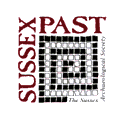Sussex Archaeological Collections: Relating to the history and antiquities of the counties of East and West Sussex
Sussex Archaeological Society, 2000. (updated 2022) https://doi.org/10.5284/1000334. How to cite using this DOI
Data copyright © Sussex Archaeological Society unless otherwise stated
This work is licensed under the ADS Terms of Use and Access.
Primary contact
Jaime
Kaminski
Sussex Archaeological Society
Barbican House
169 High Street
Lewes
BN8 1YE
Resource identifiers
- ADS Collection: 285
- DOI:https://doi.org/10.5284/1000334
- How to cite using this DOI
'The lady fired splendidly'
Lewes and the Women's Suffrage Campaign
By FRANCES STENLAKE
In its reaction to the women's suffrage campaign conducted throughout the country during the years preceding the First World War, Lewes hardly lived up to its reputation for radicalism. Although certain eminent Lewesians, exhorted by members of the non-militant Brighton and Hove Women's Franchise Society, eventually formed a Lewes branch of the National Union of Women's Suffrage Societies, this was of limited effect in promoting the cause. The problem for constitutional campaigners was that, in Lewes, confusion between non-militant Suffragists and law-breaking 'Suffragettes' prevailed. The proximity of Brighton and the well-publicised activity of militant activists there, members of the Women's Social and Political Union, caused the authorities in Lewes to be in constant fear of infiltration and destruction of property, especially while the organiser of the Brighton and Hove branch of the WSPU lodged in Southover High Street. The detention in Lewes Prison of women's suffrage campaigners convicted of criminal action contributed to the popular conception of all female campaigners for women's suffrage as bogeywomen, fit only to be impersonated by cross-dressed men in torch-lit processions, and burnt as effigies at Bonfire. The local press provides the only documentation of women's suffrage campaigning in Lewes, but there was no particularly sympathetic newspaper printed in the town. The success of the Cuckfield and Central Sussex Women's Suffrage Society, by contrast, owed much to the assured support of the Mid Sussex Times, printed in Haywards Heath, which repeatedly emphasised that, as a branch of the NUWSS, the CCSWSS was constitutional and law-abiding.





